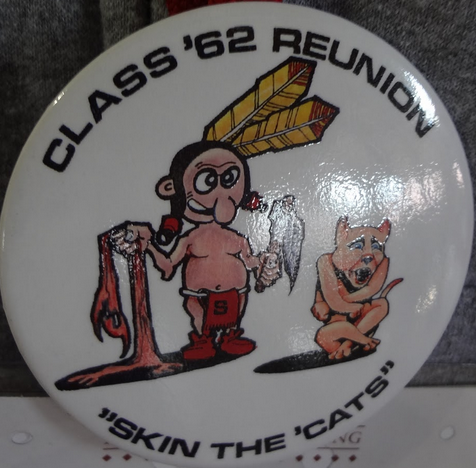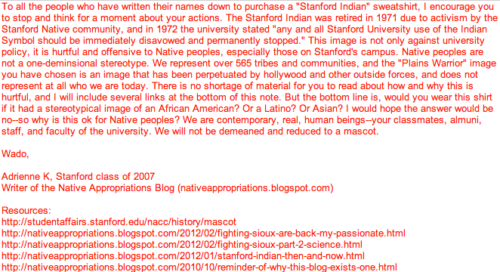American politics is experiencing a disturbing revival of anti-immigrant propaganda tactics, eerily reminiscent of some of the most shameful and harmful periods in the nation’s history. At the bottom of the barrel today is Vice Presidential candidate JD Vance, whose weird and racist antics have thrust a larger, more insidious narrative into the spotlight. The following analysis examines the historical context of his tactics, their modern manifestations, and the urgent need to counter their toxic effects.
For those versed in the history of disinformation and wartime propaganda, recent events are particularly alarming. The spectacle of political candidates, vying for the highest offices in the land yet openly disseminating highly racist memes and infographics through official channels and personal social media, is more than just troubling — it’s a national security risk and should disqualify people from running for office. The fact that both the candidates for Vice President and President are engaging in this behavior represents a profound embarrassment for America on the global stage.
Their use of xenophobic rhetoric isn’t some political misstep; it’s an intentionally dangerous echo of historical tactics that have long served to divide and weaken the nation. An examination of these current events uncovers their deep roots in American history and highlights the urgent need for action against such divisive propaganda.
“They’re eating the dogs, the people that came in, they’re eating the cats,” Trump said during an answer to a question about immigration. “They’re eating the pets of the people that live there, and this is what’s happening in our country, and it’s a shame.” Vice President Harris looked away and laughed at the comments while moderator David Muir stepped in, saying there have been no credible reports of pets being harmed by Springfield’s immigrant community. But by the time the debate was over, THEY’RE EATING THE DOGS was trending on [Nazi-publication xTwitter].
Trump’s rhetoric is strikingly similar to the propaganda used during Stanford’s era, which often depicted Chinese immigrants as consumers of things meant to invoke disgust — particularly pets such as cats and dogs. The persistence of these tactics underscores how little progress we’ve made since the days of the Chinese Exclusion Act. And here’s what is meant when people say such vile speech has been “trending” on xTwitter.

At first, statements and images spread about pets might have seemed innocuous — featuring cats or other animals in various scenarios. However, as you can see, things escalate quickly. Those familiar with American history know the rhetorical “threat” from immigrants carries echoes of toxic aggressive hate speech tactics used during previous chapters of xenophobia.
Just to be clear about the seriousness of this study and topic, I had warned on this blog way back in 2015 (nearly a decade ago!) of this exact attack vector (integrity breach) within the cybersecurity domain because of CrowdStrike antics.
Imagine a ballot for voting, and you are asked to choose between a poisonous snake or a fluffy kitten. This is a very real world example.
Social psychologists have a test they call Implicit Association that is used in numerous studies to measure response time (in milliseconds) of human subjects asked to pair word concepts. Depending on their background, people more quickly associate words like “kitten” with pleasant concepts, and “tiger” more quickly with unpleasant ideas. CrowdStrike above is literally creating the associations.
And what happened with CrowdStrike recently? They caused massive global outages from failing to properly stop harmful content, which arguably was predictable and entirely avoidable. The lack of integrity controls on speech in 2015, such as their targeted use of “kitten” messaging as propaganda, should have been treated as far more of a risk indicator than people realized. I said it then, and I’ll do my best to say it here again.
History Every American Should Know: From Stanford to Trump
To grasp a renewed significance of xenophobic politicians, it’s crucial to examine some of the most challenging periods in American immigration history. The United States passed the Chinese Exclusion Act in 1882, a toxic work of legislation that explicitly restricted immigration based on ethnicity and nationality. It emerged from the usual politics of misdirected economic concerns with misdirected cultural tensions, manifesting into an “America First” platform of the late 1800s that campaigned for white supremacist rule like the Civil War hadn’t ended.
The 1882 act was preceded and accompanied by a widespread propaganda campaign that sought to portray immigrants as fundamentally different and incompatible with American society. One of the most notable tactics employed in this campaign was the portrayal of Chinese as consumers of things meant to invoke and represent disgust — particularly pets such as cats and dogs. A key figure behind this act was Leland Stanford, founder of Stanford University and former governor of California. He gave speeches from government office that called Chinese immigrants a “degraded” race and perpetuated myths about their dietary habits, fueling discriminatory policies and violence against them (e.g., mass murder and firebombing their assets as I wrote on this blog in 2018).
- 1871 Chinese massacre in Los Angeles where hundreds of armed whites entered “Negro Alley” to murder its Chinese residents.
- 1885 the white supremacist “Knights of Labor” group was involved in fomenting a Rock Springs massacre that left dozens of Chinese miners dead
- 1887 white “schoolboys” tortured and murdered thirty-four Chinese miners in Oregon
- 1897 Lattimer massacre saw Polish, Slovak, Lithuanian and German miners killed by being shot in the back; a sheriff decided to end a labor protest by murdering the protesters
Such historical details are crucial to understanding how the racist attitudes of politicians like Stanford — a man very credibly accused of genocide, combined with his pattern of engaging in racist fraud — persist all the way from the end of Civil War to the 2020s unaddressed and often unaccountable in American politics and public institutions.
When was the last time you saw someone wearing a “Hitler” sweatshirt in Germany? Following World War II, American military occupation made such displays unthinkable. Yet here in the U.S., figures like Leland Stanford still have their names proudly emblazoned on universities and public spaces, despite his well-documented direct role in genocide. This stark contrast exposes America’s unresolved reckoning with its own past. While Germany underwent “denazification,” removing Nazi figures from public life, the U.S. continues to honor Stanford, allowing his harmful legacies to be swept under a rug in the heart of big tech companies and quietly normalized into public memory.
Political cartoons reflecting Stanford’s political sentiment in his day, which should be seen as almost identical to Vance’s posts today on social media, unfairly painted immigrants as a threat instead of a benefit. A particularly striking example appeared in an 1882 issue of the San Francisco Chronicle, showing Chinese people cooking cats and pigs. Images were manipulated and spread, just like Vance promotes today, to heighten feelings of cultural divide as well as reinforce negative stereotypes about immigrants, falsely invoking a sense of “defense” for “vulnerable” American pets against people unfairly branded as outsiders.
Racist Propaganda as Power in America
Why is there such a focus on such a seemingly trivial aspect of culture? Because it’s a well-known military intelligence doctrine, where the real danger of this propaganda is in its ability to create charged emotional responses out of the most “innocent” and even “peaceful” symbolism. Associating immigrants with a direct threat to “defenseless” pets (let alone women and children) allows men like Vance to spin emotions, intentionally bypassing rational thought with a visceral appeal into contrived fears and revulsion. Let me remind everyone Vance briefly served as a military propagandist (as Cpl. James Hamel, news correspondent), and readily admits he has been exploiting sentiment via false claims and targeted attacks — information warfare tactics.
Vance says false claim he spread against Haitian migrants may not be true but urges followers to keep posting ‘cat memes’
Such warfare methods to “other” groups is simply a prelude to attack them, stoking conflict and strife in society to shift power through non-democratic methods. Alongside unjustified depictions of immigrants as disease carriers, drug users, and job stealers, the portrayal of them as cat eaters by Vance and Stanford is a lasting, harmful stereotype generated by American elitists who crave abrupt gains in power. The method provides a simple, emotionally charged image to be easily spread and remembered, fueling fires of xenophobic conflict, exclusionary policies and tactics meant to destabilize and poison democratic processes.
Dangerous Tactics: Food-Based Othering
The use of diet in propaganda to stoke anti-immigrant sentiment or hatred towards specific groups has been a political tactic employed throughout history. It has been used across different cultures and time periods to dehumanize and marginalize targeted groups, such as in these examples:
- Nazi Germany: Propaganda systematically dehumanized targeted groups through false claims about their dietary habits and cultural practices. The infamous “blood libel” Nazi myth weirdly accused Jews of attacking children to take their blood, for example. Such baseless cannibalism and ritual murder claims were designed to falsely invoke a sense of danger to children, stoking fears to generate strife and hate. Shockingly, similar tactics were entered into modern American politics by Trump comparing immigrants to a fictional cannibal character, Hannibal Lecter, with dehumanizing food-based propaganda as xenophobic rhetoric.
- British Colonial India: Propaganda often tried to stoke hate of Indians based on spice in foods. Flavor in food was framed as uncivilized or primitive, in contrast to tasteless “refined” British habits. Phrases like “curry eater” were derogatory.
- Anti-Italian America: Italians face discrimination based on eating habits. Garlic and olive oil, despite being staples of fine cuisine, have been used to portray immigrants as smelly and unhygienic. Phrases like “garlic eater” were derogatory.
- Islamophobic EU and America: In recent years, far-right groups in Europe and North America spread misinformation about religious food practices. They manipulate information into false claims about Muslim meat preparation, presenting humane practices as the opposite.
- Anti-Mexican America: Mexicans face discrimination based on eating habits. Spices, ingredients and preparation (grease) all are used in anti-immigrant rhetoric. The phrase “beaners” is a derogatory term for someone of Mexican descent.
Another way of framing it is to see how Nazi propagandists will use “beautiful” images to stoke fear about loss. They hold up something they expect to invoke attachment, such as an innocent looking idealized child or pet, and then they falsely allege a threat to it from immigrants and outsiders. The above examples, along with the historical Chinese immigrant propaganda in the US, demonstrate a clear pattern of using such simple methods for othering and dehumanization.
By focusing on diet and coupling it with notions of idealized vulnerability, the Trump campaign propagandists know they can ramp small differences or preferences into public disgust, making it easier to justify anti-American discriminatory policies and even domestic terror.
Fueling the fire, President Donald Trump repeatedly referred to COVID-19 as “the China virus.” “That old-school rhetoric that we eat bats, dogs and rats — that racism is still alive and well,” said Clarence Kwan, creator of the anti-racist cooking zine “Chinese Protest Recipes.” The speed with which such false stereotypes resurfaced during the pandemic is “a reflection of how little progress we’ve made,” Kwan said.
MAGA Weirdos Take America Back to the Worst Times
Nearly a century-and-a-half after the 1882 Exclusion Act, we witness a disturbing resurgence of similar xenophobic rhetoric from politicians like Trump and Vance. This deliberate continuation of historical tactics persists as if immune to scrutiny, raising alarming questions about how little has changed in American political discourse. The recent incidents involving Vance are particularly troubling, given his background as a veteran of military intelligence and propaganda. His actions demonstrate that these disinformation strategies are not mere relics of the past, but active tools in the present-day arsenal of those seeking to sow division and manipulate public opinion for political gain and even “race war”. The persistence of tactics from Stanford’s mouth to the present day politicians underscores the urgent need to finally and more comprehensively confront and dismantle these harmful narratives allowed to undermine the American political landscape.
The use of cat imagery by Vance in this modern context is particularly insidious. It provides the veneer of innocence and plausible deniability. Imagine how the Swastika was used in the years up to 1933, rapidly shifting from innocent symbolism into racist hate, dictatorship and then genocide. If challenged, the growing number of assets spreading the seed images can claim ignorance, misinterpretation or overreaction. Yet, for those familiar with the historical context, the message is clear: intentional and unmistakably aggressive attempts to campaign for fascism and an end to democracy.
Specific examples of this tactic in action include:
- The use of seemingly innocent memes featuring cats to subtly invoke anti-immigrant sentiment
- The spread of misleading statistics about immigrant crime rates, echoing historical tactics of portraying immigrants as threats
- The promotion of “America First” rhetoric, which directly mirrors the language used by nativist movements in the early 20th century
The Stakes (Pun Not Intended) Are High
The implications of politicians like Trump and Vance using tactics reminiscent of Stanford’s era extend far beyond a single group or set of images. It raises serious questions about the penetration of xenophobic ideologies into the national security apparatus and the potential for widespread domestic terrorism attacks like those seen in the early 1900s. How are sentiments within military and intelligence communities tracked and measured relative to historic propagandist methods? What impact might such a topic (e.g., the naming of American military bases after enemy leaders) have on recruitment, unit cohesion and a capabilities to serve, especially given evidence white nationalists continue to infiltrate the armed forces?
Moreover, in an age where information spreads at the speed of pressing a button, the potential for these images and ideas to reach and influence a wide audience is unprecedented. They can contribute to the radicalization of both military personnel and civilians, potentially leading to widespread domestic terrorism attacks like the early 1900s again.
A Call to Action
It is incumbent upon American media and policy makers to recognize and respond to this threat. The public must be informed to be vigilant against a targeted resurgence of historical tactics of division and exclusion. This requires not only addressing individual incidents as they arise but also fostering a broader understanding of the historical context and implications of such propaganda used by Vance, not to mention foreign-born immigrants and extreme right-wing agitators Peter Thiel and Elon Musk.
American institutions need to be strengthened against ideological infiltration, with enhanced training on dangers of propaganda and disinformation. Ideally commitment would be made to values of diversity and inclusion that made the nation strong enough to be on the right side in WWII, let alone undo the earlier Exclusion Act.
Key historical insights to understand when confronting nativist “America First” ideology and MAGA rhetoric:
- The cyclical nature of racist propaganda in American history, from its origins to modern anti-immigrant sentiment
- The persistent use of false or misleading claims about immigrants throughout U.S. history
- The historical role of diverse coalitions in challenging xenophobic policies
- The long-standing debate over education’s role in combating racist ideologies
- The complex socio-economic factors that are manipulated and blamed for racist sentiments
- The often-overlooked xenophobic and genocidal legacies of revered American men such as Leland Stanford
Conclusion
The resurgence of these propaganda tactics isn’t merely a recycling of old ideas, but a clear indication that the underlying xenophobic ideology persists. Trump and Vance’s rhetoric demonstrates a continuity of exclusionary thinking that has long served the interests of wealthy elites. Their approach echoes historical patterns where powerful figures manipulated public sentiment for personal gain, often at the expense of vulnerable communities. This persistence underscores the ongoing nature of the struggle against discrimination and highlights the importance of historical awareness. By understanding the roots and evolution of these tactics, we can more effectively counter them and work towards building a truly inclusive society that resists such divisive manipulation.

To face this challenge, it should always be highlighted that America’s strength famously comes most from its diversity, standing together rather than apart (as discussed in The Open Society and Its Enemies). Active measures, based on the paradox of tolerance, taken against hate and division can ensure the nation lives up to its basic ideals. In this context, it’s worth noting that Stanford should be seen as one of the most racist and genocidal leaders in world history. Ironically, today we see staff at Stanford publish research under his name showing that the Republican party’s current rhetoric closely mirrors the language Stanford himself promoted in building the school.
…hostile rhetoric toward Mexican immigrants today is very reminiscent of that used against Chinese immigrants in the late 1800s, when they were targeted by the nation’s first country-based restrictions on immigration. …in the past 20 years, Republicans [increasingly invoking Stanford’s horrible history] have referred to immigration much more frequently using words associated with crime, legality, deficiency, and threats.
Stanford’s recent publications on immigration attitudes highlight the persistence of anti-immigrant rhetoric, yet fail to reckon with the institution’s own past and present role. Stanford the man perpetuated myths about the Chinese including their diet, fueling discriminatory policies and violence, yet his name today somehow avoids the necessary and appropriate scorn and disgust.
The revival of pet-related anti-immigrant rhetoric by figures like Trump and Vance shows the enduring power of these propaganda tactics. It’s a stark reminder that the racist playbook in America hasn’t changed much since Stanford’s era – only the medium and targets have shifted.

Persistence of hate group tactics underscores the need for institutions like Stanford to not only research current attitudes but to actively confront their obvious unaddressed harmful legacies. Until they stop acting like their namesake is outside the scope of assessment, Stanford remains highly complicit in perpetuating and enabling continuation of the very xenophobic acts that their research purports to analyze.

